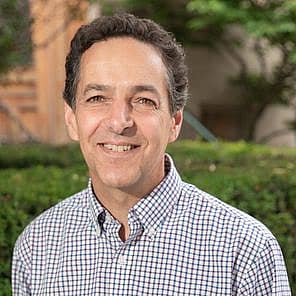The real adventure of any gap year is facing a vast array of choices, making a bold move in one direction at a time, and then getting real-world feedback in the form of joys and sorrows, beautiful sunsets and missed travel connections. The lessons from this adventure, lived and repeated each day, are what make a gap year universally valued and respected by colleges.
Through my work with college transfer students, I’ve seen young people who went through high school checking off all the boxes that came from teachers, parents, and college counselors but found themselves ill-equipped and lacking the internal motivation and resilience to thrive in their freshman year. The exciting part of my work is seeing these young people gather themselves and head off in a new direction with the energy that comes from increased self-knowledge and movement toward something that brings joy. What I’ve seen firsthand in these transfer students supports what colleges assert with increasing confidence and see in their data: gap year students graduate on time at higher rates than their peers and bring a sense of purpose to their studies that traditional college freshmen often lack.
Alex, a hard working student with a traumatic past, looked with me at likely transfer colleges and still, many weeks into the application process, found himself and his plans for a future in business leaving him flat. Eventually, he recalled his time working part-way toward a pilot’s license during high school and lit up in a way I hadn’t seen — and he hadn’t felt — when he had been checking off the boxes of the transfer process and writing about an interest in business that wasn’t really there. This spark eventually led to a successful Calculus class in the evenings during a spring term away from college and enrollment the next fall at Embry-Riddle Aeronautical University in Daytona Beach. He pivoted away from the college-as-usual, lifeplan-by-default style of checking off boxes to pursue something unique to his life experiences and interests. This built my confidence in the potential of the work I do, but it also showed me that even students who know they want to transfer can begin — and perhaps complete — even this very personal process without taking real risks and investing themselves in ways that will launch them on a new trajectory.
Two other tech-oriented students I worked with found themselves overwhelmed by college for a web or reasons — which I think is most often the case — including a lack of initiative and self-advocacy skills, weak in-person relationship skills, and an academic direction that demanded more sacrifices of auxiliary interests than they were willing to make. One identified creative writing as equally important to math and engineering classes. He found a hybrid liberal arts/engineering college with room for both. The other left a world-renowned tech college to attend a college closer to home, return to laboratory science work that he had enjoyed as an intern, and also have time in his schedule to choose electives in psychology. Both these young men used a good portion of their time away from college learning about themselves through intensive therapy that made them more reflective, flexible, open, and adaptive. As they headed off on their new college adventure, everyone involved knew their success would be much more likely given the improved balance of an external, programmatic match and more robust life skills and internal resources.
Gap Years aren’t a panacea, but when well done — with investment and ownership from students and a commitment to taking risks and learning from setbacks as well as successes — they can help students develop the internal motivation and adaptive skills that lead to productive, healthy lives and not just bachelor’s degrees. Reorienting the goal toward a full, balanced, and even joyful life rather than simply a degree can help avoid the deadening routine of life lived by checking off boxes.
At every stage of life, our challenge is to escape the human tendency toward rote mind and rote behaviors. What better way to break out than to open our arms to the world that our choices bring during a gap year, give what we can in each moment, and then make good use of whatever the world offers us in return?


